The desert kingdom of Oman is still a gem that travelers overlook, but that is quickly changing. The Middle Eastern country is home to awe-inspiring mountain ranges, endless deserts and enough sunshine to make wintry Britain a distant memory: a blessing for anyone planning to escape the rain and cold, and especially in the first few months of the year.
Every visit to Oman begins and ends in the capital Muscat – and although many people tend to blow straight through on their way to the countryside, Muscat offers plenty of delights in its own right. From the bustling souks to coral islands teeming with life, it’s a great place for curious travelers to spend a stopover or even a weekend getaway.
What must we do
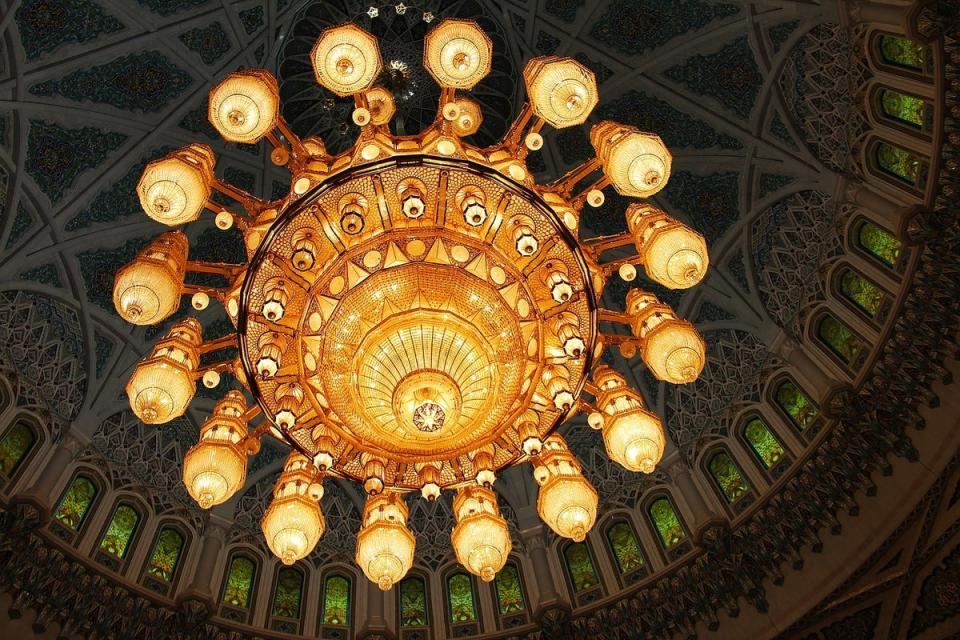

Home to several sprawling suburbs surrounding the old core, Muscat is surprisingly spread out, meaning the best way to see it is via a guided tour (which most hotels offer) or by renting a car.
Luckily, nothing is more than a ten-minute drive away, so we recommend starting your trip with a visit to the epic Sultan Qaboos Grand Mosque. It was completed in 2001 and is free to visit until 11am every day except Friday. It’s a paradise of creamy stone walkways, huge gardens and nooks where you can hide from the sun.
When you step inside, the men’s prayer room is breathtakingly opulent, decorated with carpets imported from Iraq and the second largest chandelier in the world, which is of course dripping with Swarovski crystals. If you are a female traveler, please bring a covering or ask to borrow one as you will be asked to cover your head as a sign of respect.
From there, head to Mutrah – the urban district bordering Muscat city center – to visit the famous Mutrah Souk. Hidden from the sun, it is a maze of alleys and small shopfronts: the perfect place to look for souvenirs, paintings or caftans to take home.
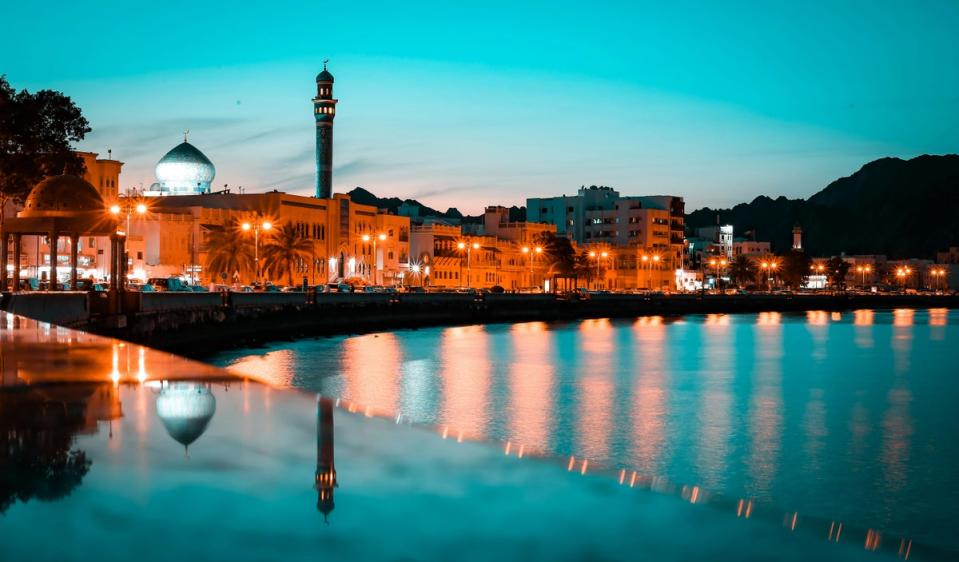

From there it’s time to really see Muscat. Take El Riyam Road over the mountains for stunning views of the old town: flanked by the imposing old Portuguese Mirani Fort (which will open to the public in 2025) and bordered by ocean views, it’s picture-postcard.
Old Muscat itself is home to the rather funky Al-Alam Palace, one of the sultan’s official residences. It’s not open to the public, but still worth a stop, simply to appreciate how bizarre the conversion of the old 1970s building looks. For history buffs, it’s also right opposite the National Museum, which is huge and sprawling and well worth spending a few hours exploring (tickets cost 5 Omani real, or £10; nm.gov.om).
The other must-see in Muscat is the opulent Royal Opera House (rohmuscat.org.om). Built at the sultan’s own expense, this mountain of white marble is filled with gold leaf, teak and intricate decorations, and if you’re there in theater season it’s surprisingly cheap to get a ticket, with seating from 3 Omani real (about £6).
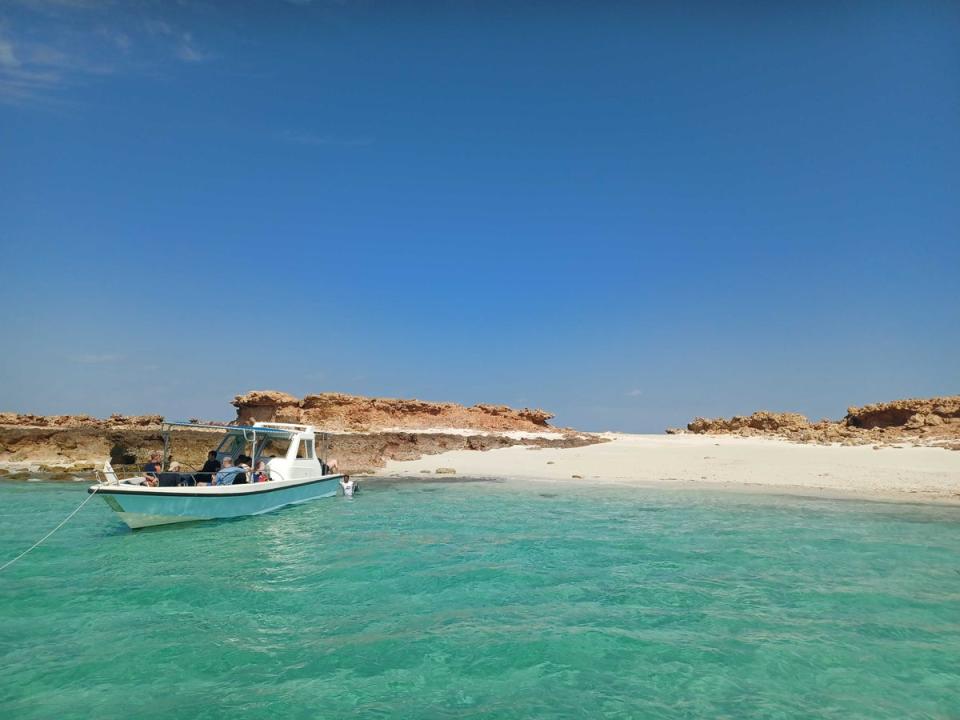

Sick of the city? Then spend your second day taking a trip to the Dalmaniyat Islands. Located about forty minutes offshore, these small redstone islands are home to some beautiful coral reefs, making them the perfect place to spot blacktip reef sharks, whale sharks and green turtles. Half-day excursions depart in the morning and afternoon (the morning offers better weather) and can be booked through your hotel or tour operators such as Silent Sands Oman (stillsandsoman.com). Prices vary, but expect to pay around £80. The same goes for trips to Wadi Shab and Bimmah Sinkhole, with beautiful walks, oases and plenty of swimming opportunities on the edge of town.
Where to eat
Muscat is the metropolitan heart of Oman and therefore there is plenty of good food to be found – if you know where to look.
For breakfast, a trip to the trendy urban hotspot Al Mouj is a must. Originally built as an expat district, it is now home to a small marina, flanked by cafes and dessert shops serving top-notch meals and snacks. Go to Mani’s (almouj.com) for an Arabic breakfast and watch the boats come in.
Breakfast is one thing, but for lunch or dinner there is no better place than Bait Al-Luban (baitalluban.om). Set in a beautiful old stone building on the coast of Mutrah, Bait Al-Luban is a sea of cheerfully woven cushions, low tables and windows overlooking the azure ocean. The food isn’t bad either: this place was once home to the Sultan’s former chef, and now that they’re gone, the cuisine is still just as good – think dishes of Qabouli Laham, or slow-cooked lamb. in rice, fragrant Saloonat Dijaj (chicken curry) and to top it all off, delicate Luqaimat dumplings, soaked in condensed milk and date syrup.
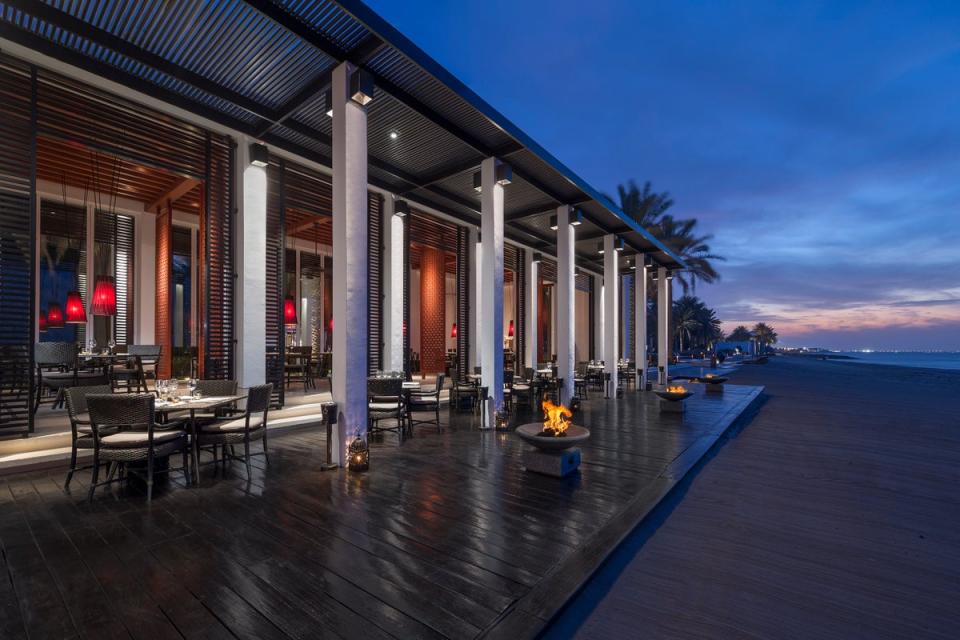

If you stay here longer, make time to visit Rozna (roznaoman.om). Located in a traditional Omani mud house (although this mud house is more of a palace), their biryanis are particularly good. But for those who fancy eating like a local (and like a king), follow your nose to The Beach Restaurant in the Chedi (ghmhotels.com).
Frequented by Omanis and tourists alike, this restaurant is right on the beach and serves fish fresh from the sea, any way you choose – although, if we had to choose, the prawns with trofie and squid salad are the stuff of dreams . Be warned: tables book up quickly during the winter months, so make sure you book well in advance. Choose a table next to the ocean and enjoy a glass of wine as the sun sets over the ocean. Bliss.
Where to stay
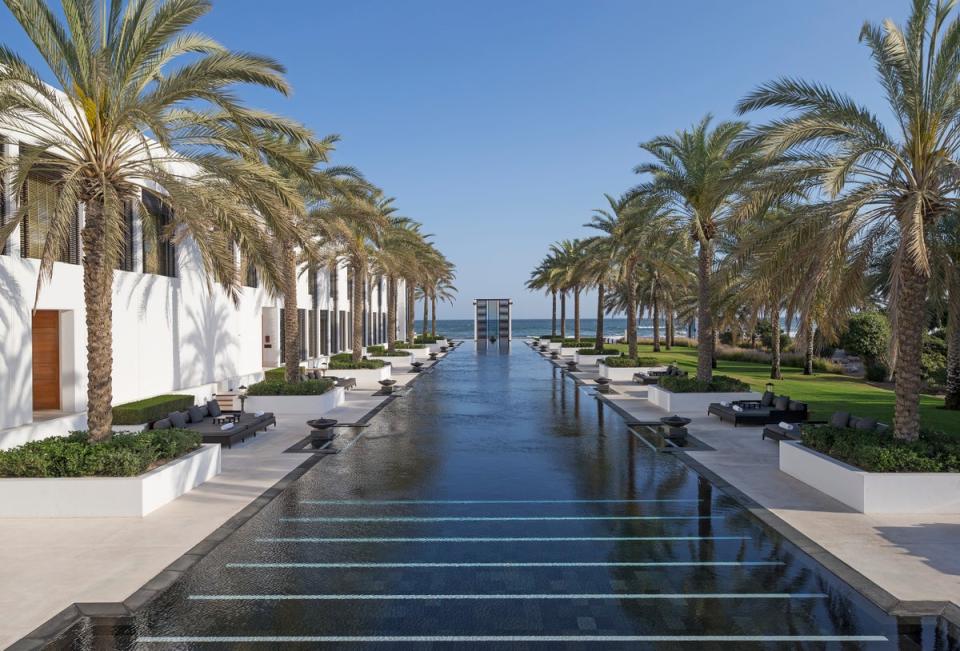

At the top of the list for weary travelers (or just those looking for some rest and relaxation) has to be The Chedi. Opened in 2003, it still feels strikingly modern: detached white villas are spread across acres of green lawns, tall seagrass sways in the breeze and white stone walkways give access to tranquil ponds, while the scent of incense is everywhere.
It’s kryptonite for stressed-out professionals: there’s no way you can stay here and not feel zen when you leave. Maybe it’s the three huge pools built for lounging, or the excellent spa (currently advertising a Chedi Glow relaxation package), or maybe it’s the food. The only caveat is that the WiFi can be a bit ropey, but hey, maybe it’s a good excuse to unplug. For maximum tranquility, a Deluxe Club Suite is the best choice, but rates start from £213 in high season (ghmhotels.com).
That said, if you fancy staying a little closer to the action, the W Hotel in Muscat city center is a good choice (rooms from £171; marriott.com). The hotel has a more contemporary style and is ideal for more party-oriented travelers – for example, their WET location lets guests enjoy a dip in the pool while DJ beats rule overhead.
And further out of the city, Al Bustan Palace offers views of both the mountains and the sea (rooms from £148; ritzcarlton.com). This tranquil beachside location, a 45-minute drive from the airport, is incredibly lush. Just like the newer Jumeirah Hotel, located in Muscat Bay and with a chic layout with an emphasis on ‘adventurous well-being’. Head here for kayaking trips, mountain walks and open water swimming (rooms from £209; jumeirah.com).
When to visit
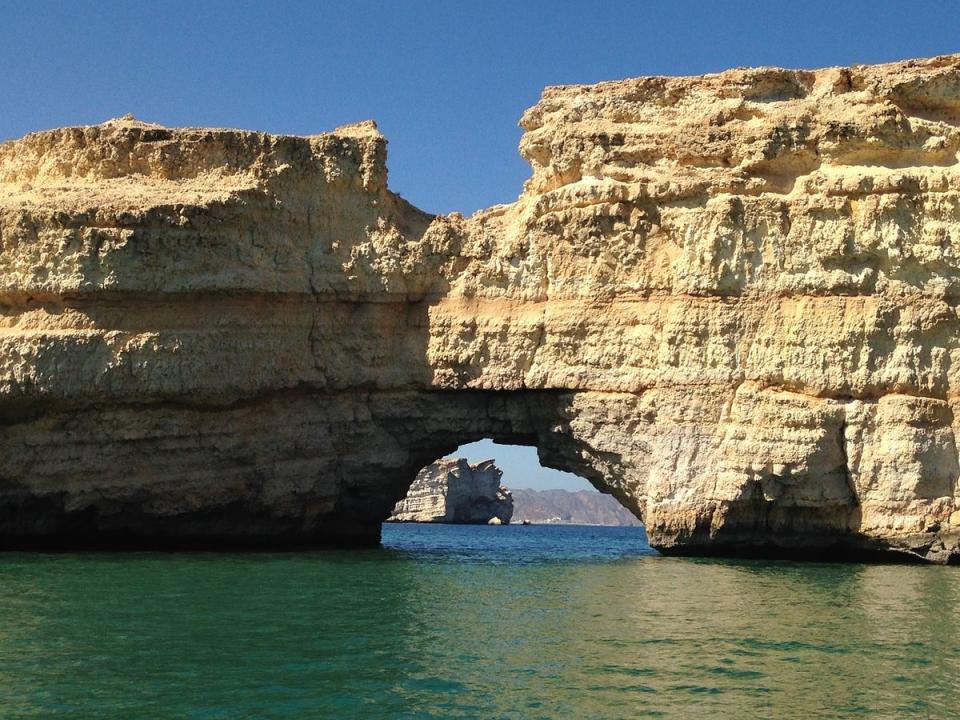

Temperatures in Omani summer can reach 50 degrees, so visiting between May and September is not recommended. Instead, go between December and April, when visitors can sunbathe and explore at a relatively balmy 23-25 degrees. This being Oman, there is sun all year round: you don’t have to worry about avoiding the rainy season.
How to get there
Flights depart daily from London Heathrow and take approximately seven hours each way; Oman Air flies direct and return prices start from £668. If you don’t mind a stopover in Doha, airlines such as Emirates can get you there in nine hours from £570.